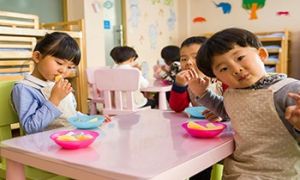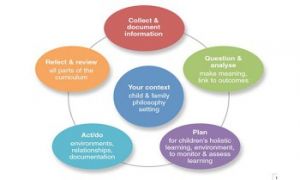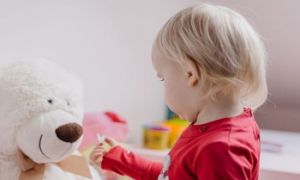In early childhood education, the quality of a play space isn’t defined by how polished it looks—it’s defined by how deeply it invites children to imagine, explore, and belong. Research consistently shows that the most powerful play environments are those that center children’s agency, emotional safety, and social connection. Here are five foundational features that elevate play from passive activity to transformative experiences.
Five Evidence Based Features
Possibility
Children need spaces where the outcome isn’t already decided. Simon Nicholson’s Theory of Loose Parts reminds us that open-ended environments spark imagination, risk-taking, and problem-solving (Nicholson, 1971). When materials and layouts whisper “What could this become?” rather than “Here’s how to use it,” children step into the role of creator, not consumer.
Inspired Materials
Loose parts—sticks, fabric, boxes, stones, and everyday items—are more educational than toys designed to teach a specific skill. They flex with children’s ideas instead of boxing them in (Zosh et al., 2017). These materials invite storytelling, engineering, and collaboration, all while honoring children’s unique perspectives.
Freedom & Permission
A high-quality play space signals: You belong here. You can climb, build, get loud, and explore. When children feel permission, play goes deeper and lasts longer (Lester & Russell, 2008). This isn’t about chaos—it’s about trust. When educators say yes to curiosity, children say yes to themselves.
Flexibility
Play thrives when spaces adapt to children, not the other way around. Movable materials, changeable layouts, and minimal adult policing allow for evolving play cycles (Hughes, 2012). A flexible space breathes with the children who use it, supporting spontaneous learning and emotional regulation.
Community & Belonging
At its heart, play is social. High-quality play spaces nurture collaboration, conflict resolution, and social growth—skills that ripple far beyond the playground (Gray, 2011). These environments foster empathy, resilience, and shared joy, laying the foundation for lifelong learning.
Real-World Examples
Possibility
Example: At Unicare Child Care Club in Western Australia, educators transformed a bare outdoor corner into a “possibility zone” using logs, crates, and fabric. Children built pirate ships, obstacle courses, and quiet reading nooks—all from the same materials. The space changed daily, driven by their imagination.
Inspired Materials
Example: In Denmark, one ECEC centre replaced plastic toys with baskets of natural materials—pinecones, shells, stones, and fabric scraps. Educators observed a dramatic increase in collaborative storytelling and engineering play, with children creating “forest kitchens,” “stone cities,” and “shell shops”.
Freedom & Permission
Example: At Leederville Early Learning Centre, educators posted signs like “Yes, you can climb!” and “Your voice matters here.” Children were encouraged to move freely, shout joyfully, and build large-scale structures. The result? Longer play cycles and deeper emotional engagement.
Flexibility
Example: In a Melbourne-based service, the indoor environment was reimagined with wheeled shelves, foldable mats, and modular furniture. Children rearranged the space daily—turning it into a dance studio, a café, or a construction zone. Educators noted increased autonomy and reduced behavioral incidents.
Community & Belonging
Example: At Holy Spirit Community of Learners in the Northern Territory, children co-designed a “Friendship Garden” with shared planting beds, storytelling rocks, and a conflict-resolution bench. The space became a hub for peer mentoring, emotional regulation, and inclusive play.
These examples show that high-quality play environments aren’t about expensive equipment—they’re about intentional design, emotional safety, and child-led possibility. When we build spaces that adapt to children, rather than constrain them, we nurture not just play but lifelong learning.
Further Reading
Loose Parts: A Guide For Educators
Incorporating Natural Materials In The Learning Environment
Nature Programs In Early Childhood Settings
Learning Environments That Show Respect for Diversity
Reference:
Rooted in Play


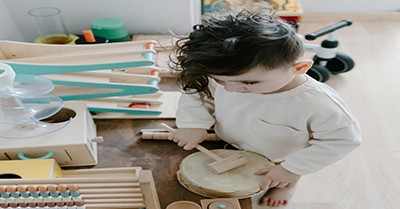


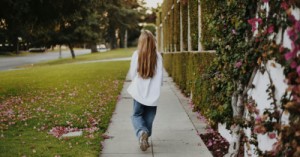

 As an Educator in Australia, your pay rate falls under the Children’s Services Award 2010. This award states the minimum amount that an employer can
As an Educator in Australia, your pay rate falls under the Children’s Services Award 2010. This award states the minimum amount that an employer can When working as a qualified Early Childhood Teacher (with a university degree) within a service, your rate of pay will come from the Educational Services
When working as a qualified Early Childhood Teacher (with a university degree) within a service, your rate of pay will come from the Educational Services When working as a Diploma Qualified Educator your pay rate is from the Children's Services Award 2010. This Award states your minimum rate of pay
When working as a Diploma Qualified Educator your pay rate is from the Children's Services Award 2010. This Award states your minimum rate of pay When working as a Cert 3 Qualified Educator, your pay rate is from the Children's Services Award 2010. This Award states your minimum rate of
When working as a Cert 3 Qualified Educator, your pay rate is from the Children's Services Award 2010. This Award states your minimum rate of Educational Leaders play a crucial role in their early childhood service by ensuring that the educational program aligns with best practices and supports the holistic
Educational Leaders play a crucial role in their early childhood service by ensuring that the educational program aligns with best practices and supports the holistic In early childhood education and care, ratios are more than a technicality—they are a frontline safeguard. Every child deserves responsive supervision, emotional connection, and developmental
In early childhood education and care, ratios are more than a technicality—they are a frontline safeguard. Every child deserves responsive supervision, emotional connection, and developmental With the new national child safety reforms kicking in on 1 September 2025, early childhood services like yours have a real opportunity to lead the
With the new national child safety reforms kicking in on 1 September 2025, early childhood services like yours have a real opportunity to lead the Here’s a comprehensive Mobile Phone and Smart Watch Policy tailored for early childhood education and care (ECEC) services in Australia, aligned with the latest 2025
Here’s a comprehensive Mobile Phone and Smart Watch Policy tailored for early childhood education and care (ECEC) services in Australia, aligned with the latest 2025 The Sea of Fish Challenge is a national initiative that invites children, educators, families, and communities to create and display fish artworks as a symbol
The Sea of Fish Challenge is a national initiative that invites children, educators, families, and communities to create and display fish artworks as a symbol Across the early childhood education and care sector, educators are sounding the alarm: current staffing ratios are insufficient to deliver safe, meaningful, and developmentally appropriate
Across the early childhood education and care sector, educators are sounding the alarm: current staffing ratios are insufficient to deliver safe, meaningful, and developmentally appropriate